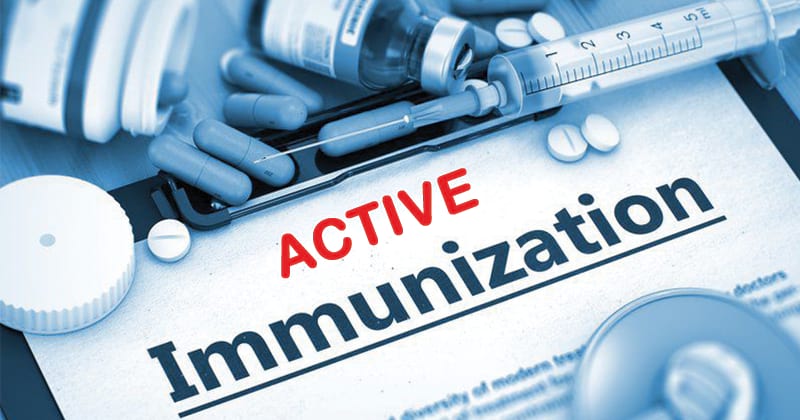Interesting Science Videos
What is Active Immunization?
- Immunization is the process whereby a person naturally acquires or is induced to acquire immunity or resistance to an infectious disease.
- An individual can acquire such immunity either passively or actively and thus immunization may be active or passive immunization.
- In active immunization, the immune system is stimulated to produce antibodies against a particular infectious agent and thus the immune system of the individual to which immunity is to be conferred is actively involved in the process.
- It may arise naturally, such as when an individual is exposed to an antigen or pathogen.

For example, an individual who recovers from a first case of the measles is immune to further infection by the measles-causing virus, because the virus stimulates the immune system to produce antibodies that specifically recognize and neutralize the pathogen the next time it is encountered.
- However, active immunization also can be conferred artificially by means of vaccines. Vaccines consist of a nontoxic antigen preparation that infers protective immunity by inducing a memory response to an infectious microorganism.
- This results in immunity which may either be antibody mediated immunity and/or cellular immunity.
- Vaccines consist of microbial products with or without adjuvant which do not cause infection under normal conditions but rather provide a long term immunological protection against the offending microbe.
- Depending upon the type of disease, a vaccine may contain live attenuated or killed microorganisms or parts or products from them capable of stimulating a specific immune response comprised of protective antibodies and T cell immunity.
- The purpose of vaccination is to ensure that a large enough number of antibodies and lymphocytes capable of reacting against a specific pathogen or toxin are available before exposure to it occurs.
- Artificial active immunization can be induced via two different routes :
Systemic immunization which involves injecting the vaccine subcutaneously or intramuscularly into the deltoid muscle. Examples include systemic vaccines for measles, mumps and rubella, and against Pneumococcus, Meningococcus and Haemophilus infections.
Mucosal immunization which involves on the mucosal route as the site of choice for immunization either orally or through the nasal associated immune tissue (NALT) such as the oral immunization against Polio. Although not commonly in practice, recent vaccination approaches have focused on this route.
- Active immunization is mostly performed as a prophylaxis measure.
- Some infections in which active immunization is performed include Hepatitis A infection, Influenza, Measles, Mumps, Rubella, Yellow fever etc.
Advantages
- The protection offered by active immunization is long-lived since it leads to the formation of long-lasting memory immune cells.
- Active immunization may be reactivated quickly by a recurrence of the infection or by revaccination.
- It is less costly in preparation and to administer than passive immunization techniques.
Drawbacks
- The protective response takes time to establish ranging from few days to weeks which makes it inefficient as a post exposure remedy.
- Since active immunization is dependent on the individuals’ immune responses, it may not be suitable for protection of immuno-compromised or immuno-deficient individuals.
References
- Lydyard, P.M., Whelan,A.,& Fanger,M.W. (2005).Immunology (2 ed.).London: BIOS Scientific Publishers.
- Owen, J. A., Punt, J., & Stranford, S. A. (2013). Kuby Immunology (7 ed.). New York: W.H. Freeman and Company.
- Playfair, J., & Chain, B. (2001). Immunology at a Glance. London: Blackwell Publishing.
- The College of Physicians of Philadelphia (2018, January 10). Passive Immunization. Retrieved from https://www.historyofvaccines.org/content/articles/passive-immunization
- Encyclopaedia Britannica (2017, November 22). Immunization. Retrieved from https://www.britannica.com/science/immunization

I have liked this work easy to understand
Hi,
Thank you so much for liking our website.